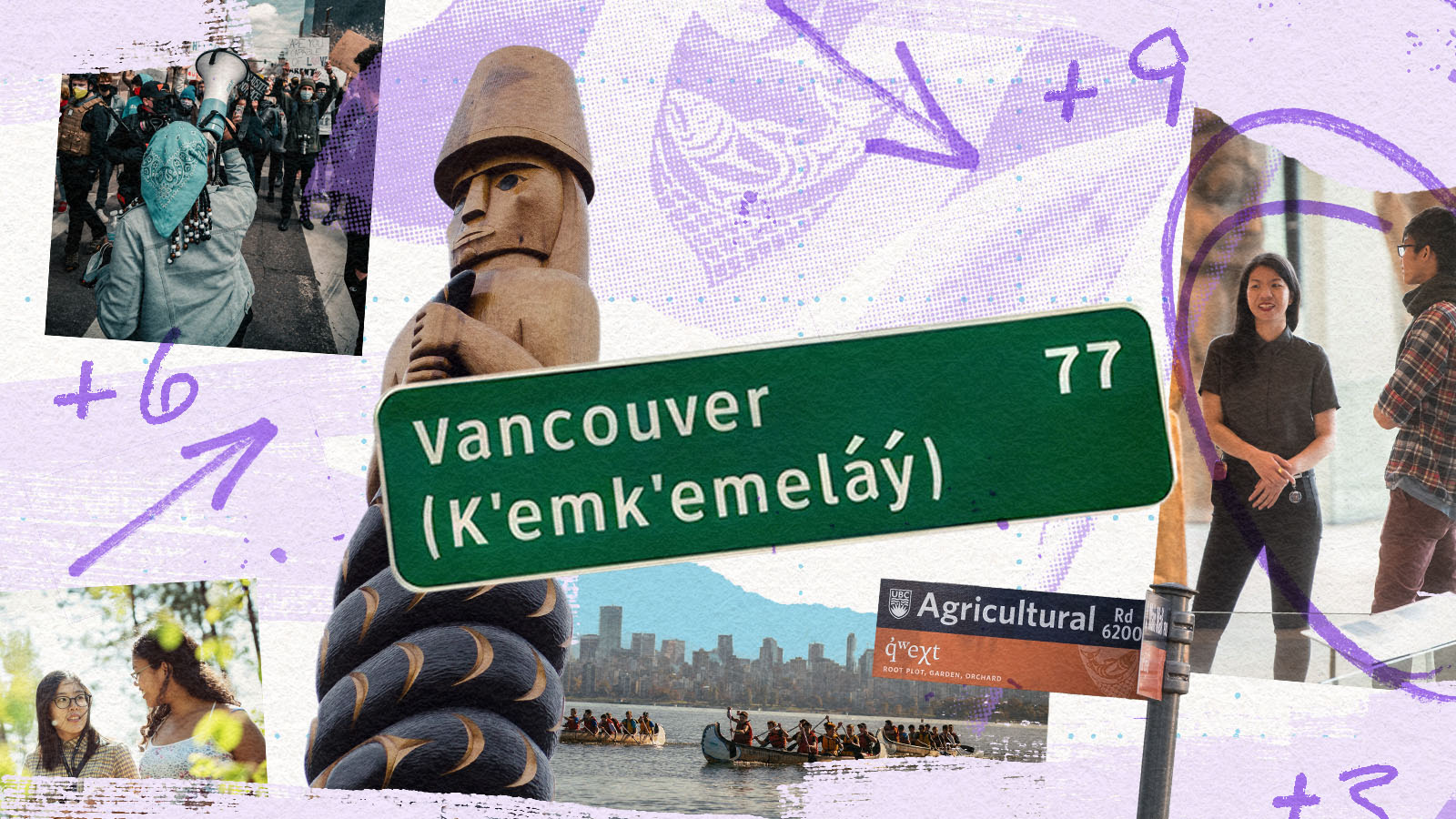The UBC Department of English Language & Literatures offers a wide variety of courses that give students an opportunity to look at the world through a new lens. By seeing the power that words hold in shaping our world, we can then begin to ask constructive questions about how to make it a better place.
Whether you’re interested in the origins of science fiction or in Indigenous literatures in British Columbia, there’s an English course (or two!) that will paint your world in more vibrant colours.
Check out the highlight of our 2024/2025 undergraduate course offerings below. Best of luck with course registration!
Please note the course times listed below are only for Lectures. Some courses also have mandatory Discussion sections. Please be sure to sign up for them in Workday Student as applicable.
ENGL_V 228A Topics in Literary and/or Cultural Studies: Introduction to Reading Place and Power in Vancouver and BC*


Native Hosts (1991/2007) by Hock E Aye Vi Edgar Heap of Birds (Cheyenne and Arapaho). This image, taken outside the X̱wi7x̱wa Library, captures one of 12 signs installed around the UBC Point Grey Campus. Photo by Brendan McCormack.
Instructor: Brendan McCormack (he/him)
Time: Term 2, Mon Wed Fri 12:00 – 1:00 pm
*ENGL_V228A fulfills the new Place and Power breadth requirement for incoming Arts students who will start at UBC in the 2024/2025 academic year and after. Read this article from the Faculty of Arts to learn more.
Why did you choose this image to represent the course?
The Native Hosts installation is a work of public art that is recognizable to students at UBC and part of an ongoing story of place-making here at campus on unceded xʷməθkʷəy̓əm land. It’s a familiar yet not uncomplicated text that raises questions about power (who speaks? for whom? who listens? …) in relation to places (Musqueam, UBC, Vancouver, British Columbia …). It’s a work of art that we can analyze critically not only for its form and content, but for how reading “place” (including displacement) opens complex discussions of how de/colonial power dynamics are enacted, felt, embodied, represented, resisted, and imagined by artists, writers, and communities. These topics are all central to our location and this course’s literary explorations of place and power.
What are you most looking forward to about teaching in this course?
I’m excited to introduce students to the richness, diversity, and importance of local literary arts (particularly Indigenous literatures) that speak to/from/against power—colonial, racial, economic—right here where we find ourselves: at UBC, on unceded Musqueam territory, on the West Coast of what is currently called Canada, focusing especially on stories associated with Vancouver and BC. This is a new course and I hope it offers students new, important ways of understanding what it means to study English literature from right here, now. We’ll be examining local texts from a range of Indigenous, diaspora, and settler contexts that address particular geographic and communal places, and we’ll consider how literature and the arts assert (or contest) narratives of place-making and complex relations between land, creative expression, and belonging.
What can students expect from the course, in terms of workload and the types of readings?
Students can expect a course whose teaching and assignments invite them to understand themselves as variously “inside” the stories of literatures of Vancouver and BC. Crucial to our learning about reading for “place” will be the knowledges we bring, conversations we have, and reflection we undertake as a diverse community with variously situated identities, dynamic relations to place, and multiple personal and communal stories and histories converging today in “here,” where we are together. Our learning will creatively and collaborative emphasize how students are already active participants in the ongoing relational histories, power dynamics, and cultural formations that continue to story the places of here.
ENGL_V 224 World Literature in English: Apartheid and its Afterlives
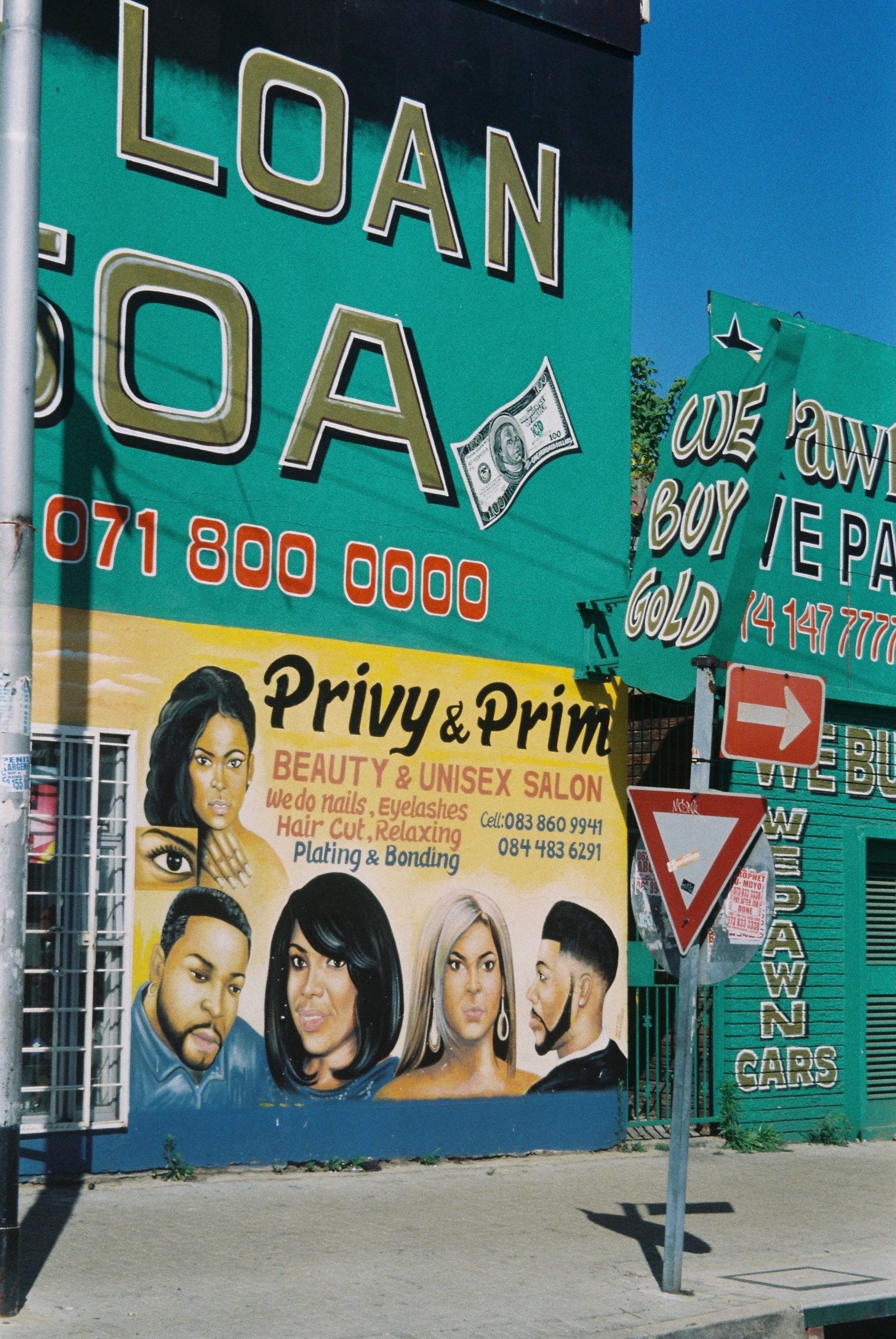

A store front in Johannesburg, South Africa that is advertising a beauty parlour, a pawn shop, and offering loans. Photo by Deena Dinat.
Instructor: Deena Dinat (he/him)
Time: Term 1, Mon Wed Fri 12:00 – 1:00 pm
Why did you choose this image to represent the course?
I thought that the over-abundance of signs and images all colliding on this one street corner reflected what’s most thrilling about reading South African literature – it’s a national literature that is always carrying many voices, contradictions, and unexpected meanings.
What are you most looking forward to about teaching in this course?
I’m interested to see the connections students make between protest literature from apartheid-era South Africa and the protest movements we’re witnessing today. What social, political, and cultural formations emerged in South Africa, and how might they allow students to engage with their own experiences of political engagement today?
What can students expect from the course, in terms of workload and the types of readings?
We’ll look at a wide range of genres and media – including novels, poetry, photography and film. Students will think through some of the ideas and questions raised by these pieces with their own creative responses, in addition to more traditional essay assignments.
ENGL_V 349 Seventeenth-Century Literature: Political Bodies, Social Selves


'Costume design for the Torchbearer of Oceania from The Masque of Blackness' by Inigo Jones. Image via Wikipedia, for noncommercial use.
Instructor: Elizabeth Hodgson (she/her)
Time: Term 1, Mon Wed Fri 12:00 – 1:00 pm
Why did you choose this image to represent the course?
“The Masque of Blackness” imagines race and racialization in the earliest decades of English colonialism: here as a costume for English royalty. The stories the White English court tells itself are all captured in this one odd and elegant figure.
What are you most looking forward to about teaching in this course?
I’ve redesigned this course in the last few years to focus much more on the 17th century as the era in which England is trying to make itself into a colonizing empire, and how that massive project changes how we read the literary works of this period.
What can students expect from the course, in terms of workload and the types of readings?
The class assignments allow students to experiment, work in teams, think slowly and explore ideas in different modes (group presentations; in-class discussions; research paper; essay exam). Readings range from short poems to plays and fascinating early histories.
ENGL_V 326 Studies in the English Language: The Language of the Media
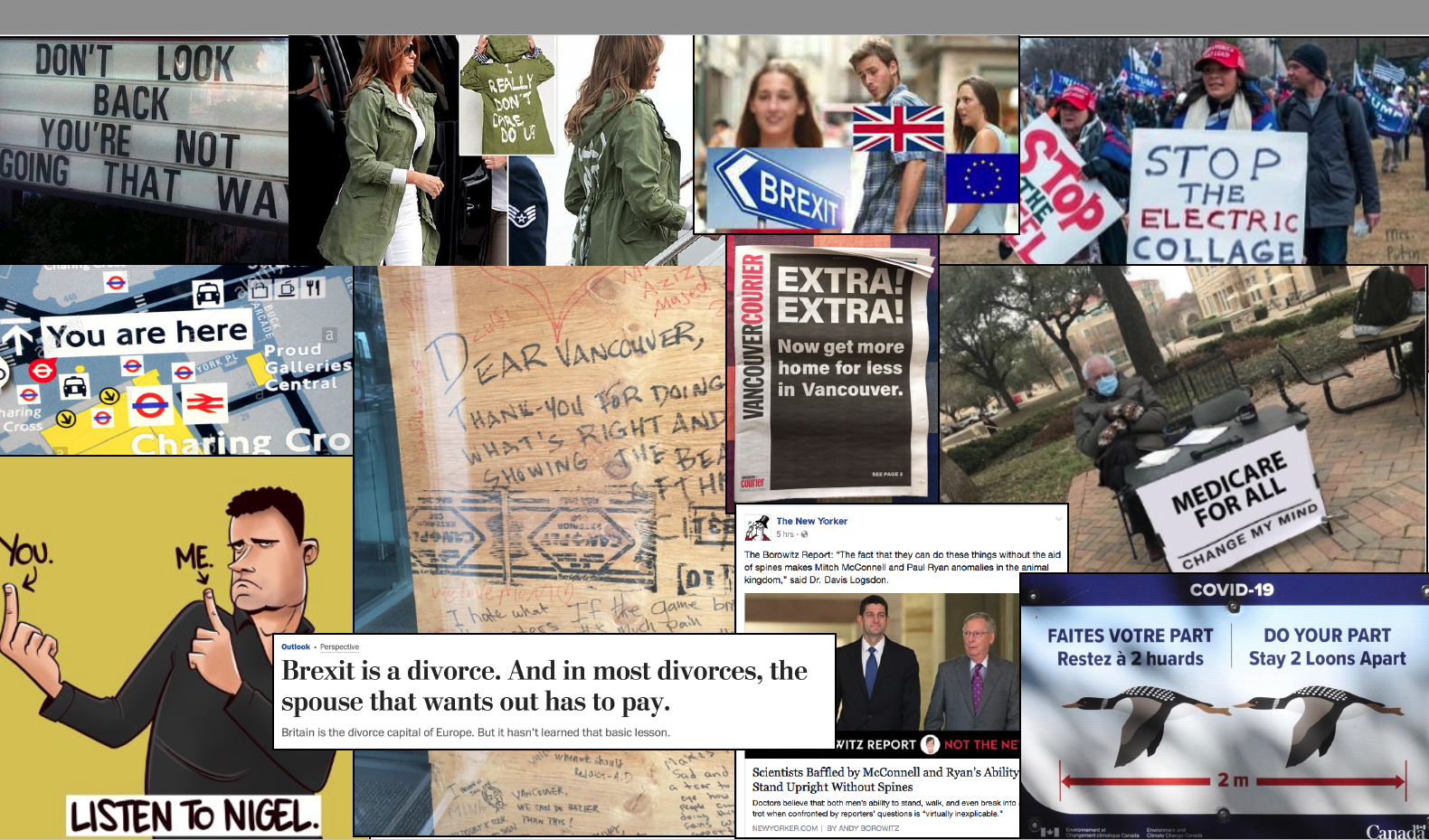

A meme collage by Barbara Dancygier.
Instructor: Barbara Dancygier (she/her)
Time: Term 1, Tue Thu 12:30 – 2:00 pm
Why did you choose this image to represent the course?
I put together a collage that represents various uses of images in media genres. Such examples demonstrate the role images play in contemporary forms of communication – which will be one of the topics for class discussions.
What are you most looking forward to about teaching in this course?
I’m excited to show students how we receive information today by engaging various visual or textually restricted forms, and how low-brow media, memes, and social media shape our understanding of contemporary events. I also want to help the students understand tendencies in political public discourse which underlie the growing role of post-truth phenomena.
What can students expect from the course, in terms of workload and the types of readings?
The course will focus on several case studies (such as Brexit, COVID, or climate change), fleshed out via a range of discourse forms and genres. Students will engage with examples provided by the instructor and by the students themselves, both in in-class projects and take-home assignments. The course readings, required and optional, will be available via UBC Library and will contain analytical examples and raise discussion questions.
ENGL_V 355 Romantic Period Literature Stranger Things: Romanticism Then and Now
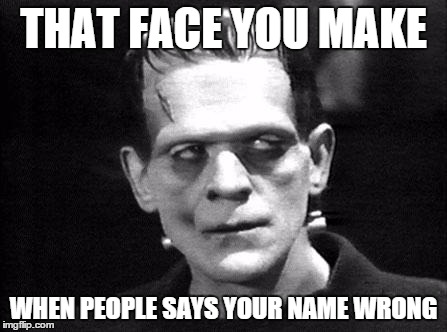

An internet meme of Frankenstein's monster, who is often mistakenly referred to as Frankenstein.
Instructor: Bo Earle (he/him)
Time: Term 1, Tue Thu 9:30 – 11:00 am
Why did you choose this image to represent the course?
It speaks to the relation between the body and communications media, and the legacy of Mary Shelley’s Frankenstein.
What are you most looking forward to about teaching in this course?
I look forward to discovering current echoes of Romantic ideas and style.
What can students expect from the course, in terms of workload and the types of readings?
Intensive reading of fiction by Jane Austen, Mary Shelley, and Charlotte Bronte, and poetry by Wordsworth, Keats, and others. There are two short formal essay assignments but most of your assigned writing will be relatively informal weekly online discussion posts.
ENGL_V 364A Nineteenth-Century Literature: The Origins of Science Fiction
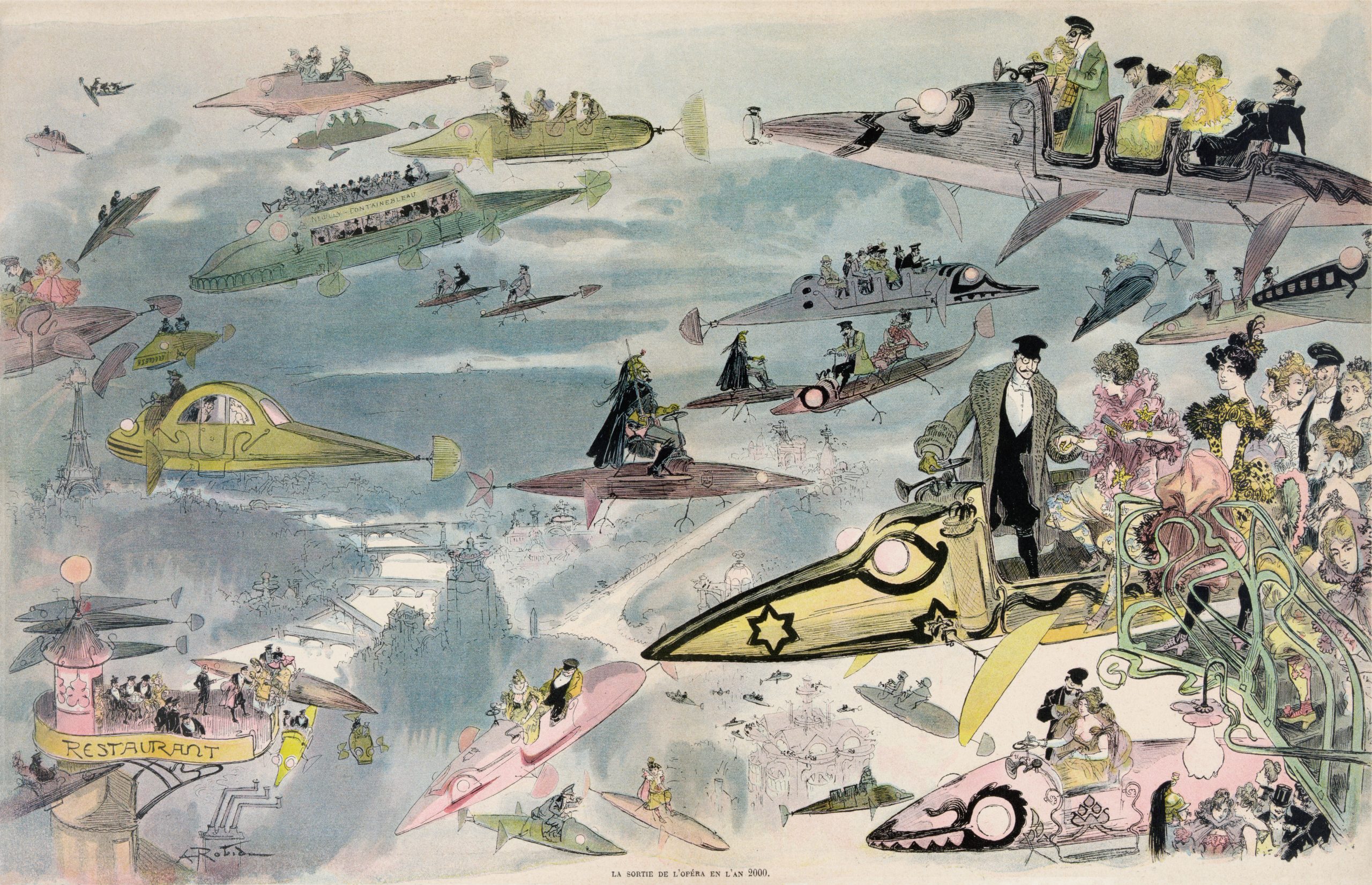

'La Sortie de l'opéra en l'an 2000' by Albert Robida (1902)
Instructor: Aren Roukema (he/him)
Time: Term 1, Mon Wed Fri 3:00 – 4:00 pm
Why did you choose this image to represent the course?
Robida’s image illustrates the utopian optimism, enchantment, and expansive imagination that suffuse nineteenth-century science fiction. Robida’s flying machines — likely influenced by science fiction stories of his time — are an example of a nineteenth-century futuristic trope that would go on to define the science fictional imagination in later eras.
What are you most looking forward to about teaching in this course?
In our time, science fiction is a dominant forum for thinking about the unknown and the future, but students will discover that much of science fiction’s DNA is embedded with sometimes archaic nineteenth-century science, religion, politics, and culture. I’m looking forward to discussing this paradox of atavism and futurism.
What can students expect from the course, in terms of workload and the types of readings?
The readings will be predominantly fiction (3 novels and some short stories). We’ll also read some short articles or excerpts from nineteenth-century voices in science, religion, and philosophy. We will conclude by assessing the nineteenth-century heritage of a contemporary science fiction film and short story.
ENGL_V 220 Literature in English to the 18th Century: Pre-Industrial Economies and Environments
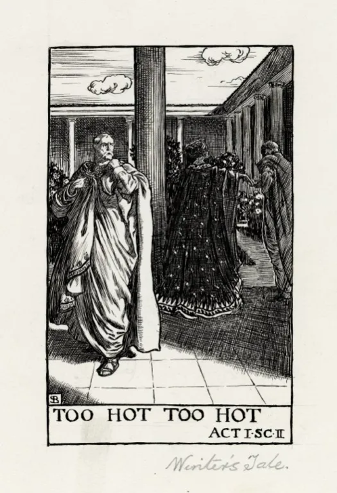

A winter's tale, a set of eight original drawings. Image via the Folger Shakespeare Library.
Instructor: Bo Earle (he/him)
Time: Term 1, Tue Thu 11:00 am – 12:30 pm
Why did you choose this image to represent the course?
It evokes the course theme.
What are you most looking forward to about teaching in this course?
I look forward to exploring alternatives to currently dominant ways of representing economics and environments.
What can students expect from the course, in terms of workload and the types of readings?
Intensive reading of Shakespeare, Milton, Donne and medieval romances. Two short formal essays are required but most of the assigned writing is informal, weekly discussions online.
ENGL_V 140 Challenging Language Myths*


In the meme on the left, rapper Bad Bunny is explaining something to media personality Kendall Jenner. In the meme on the right, a woman is explaining astrological compatibility to a man.
Co-instructors: Elise Stickles (she/her); Amanda Cardoso (she/her)
Time: Term 1, Tue Thu 11:00 am – 12:30 pm
*This course is cross-listed as the Linguistics course LING_140.
Why did you choose this image to represent the course?
Some of our most widespread language myths are related to gender; for example, it’s a myth that women talk more than men do (as our course textbook title suggests). So, it’s not surprising that the intersection of language and gender is a frequent topic in internet memes.
What are you most looking forward to about teaching in this course?
I’m really excited to teach this course because it’s co-taught and I really enjoy team teaching! I think it’s fun for students to see instructors interact and engage with each other in the classroom; it models that there are different ways to teach and engage with the material, and there is no one “right” way to learn, do, or teach. It also provides a view into how academia/research is a conversation, not a monologue. I’m also looking forward to helping students debunk some common misconceptions about how language works.
What can students expect from the course, in terms of workload and the types of readings?
Course evaluation is based on two examinations, a written project (pairs or groups), participation and attendance, and low-stakes short weekly writing. For the project, students select a language myth discussed in popular media (online, newspaper, etc.). Based on scholarly readings concerning the myth as well as material covered in class, they “bust” or confirm the myth.
ENGL_V 111 Approaches to Language and Communication: Life Writing
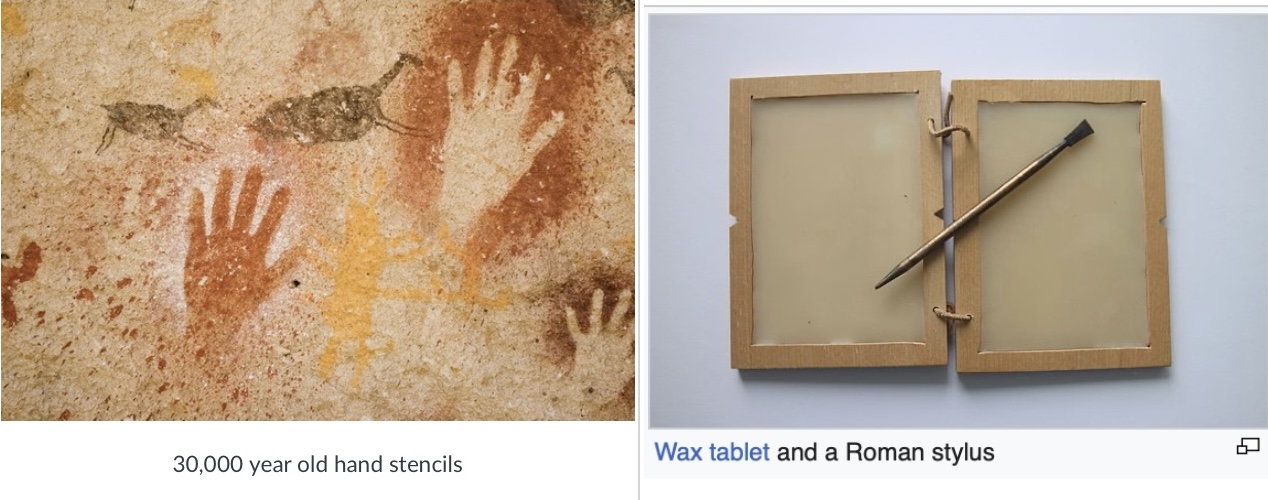

Image left is of 30,000 year-old hand stencils. Image right is a wax tablet and a Roman stylus. Both images via Wikipedia.
Instructor: Bo Earle (he/him)
Time: Term 2, Mon Wed 10:00 – 11:00 am
Why did you choose this image to represent the course?
These are images of primal social media, writing versus non-written media. I thought them quite fitting for a course on life writing.
What are you most looking forward to about teaching in this course?
I look forward to exploring the relation between science and poetry.
What can students expect from the course, in terms of workload and the types of readings?
Lots of reading and writing.
ENGL_V 227 Prose Fiction: Literature in 4D
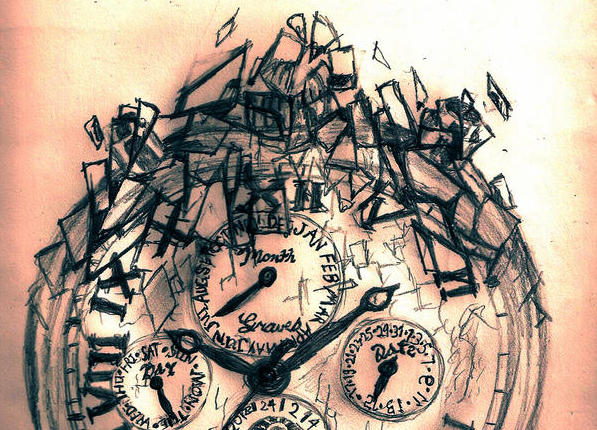

EMPEugenie, 'Time is Fading Away.' Deviant Art, CC BY 3.0.
Instructor: Aren Roukema (he/him)
Time: Term 2, Mon Wed Fri 11:00 am – 12:00 pm
Why did you choose this image to represent the course?
The sketch captures the contrast between the appearance of structured, linear time presented by clocks and calendars, and the actual scattered experience of the self stretched across past, present, and future. We’ll read and analyze fiction from many different angles in this course, but the relationship between stories and the uncanny experience of time will be a main focus.
What are you most looking forward to about teaching in this course?
Students will get a chance to reflect creatively on the theme of time and narrative by rewriting a (very) short story. They’ll change one significant event or action and then adjust the rest of the story’s plot, characters, and world from there. I’m looking forward to the results!
What can students expect from the course, in terms of workload and the types of readings?
We’ll be reading two short novels, a graphic novel adaptation of Octavia Butler’s Kindred, and some short stories. The emphasis will be on allowing time to read closely and thoroughly rather than reading as many texts as possible.
ENGL_V 322 Stylistics


Image via Pixabay.com.
Instructor: Ina Biermann
Time: Term 2*
*Please note this is an online asynchronous course and therefore does not have a set class time.
Why did you choose this image to represent the course?
Understanding literary communication is the ultimate emphasis and goal of this course. When studying the language usage in Klara and the Sun by Kazuo Ishiguro we find that there are subtle differences in the language of the artificial friend, Klara, and the humans. After studying these we discover that they reflect differences in the ways they view the world. Eventually we find that we have to ask ourselves some searching questions about our own understanding of what we estimate to be real, valuable, and in essence, human.
What are you most looking forward to about teaching in this course?
I love teaching stylistics. In this fully online, asynchronous course I enjoy reading students’ discussions and answers online and the discoveries we make when exploring the language of poetry, narrative and drama.
What can students expect from the course, in terms of workload and the types of readings?
The course has a steady, paced workload guiding students through the course lessons. There are graded and self-testing exercises, graded discussions spaced at regular intervals and two collaborative workshops. There is an individual term paper requiring the stylistic analysis of a short story by means of specific techniques employed in it that have been identified by recent work in corpus stylistics on the author’s style. The course is concluded by a final online quiz.
ENGL_V 378 Contemporary Literature: Literature and AI
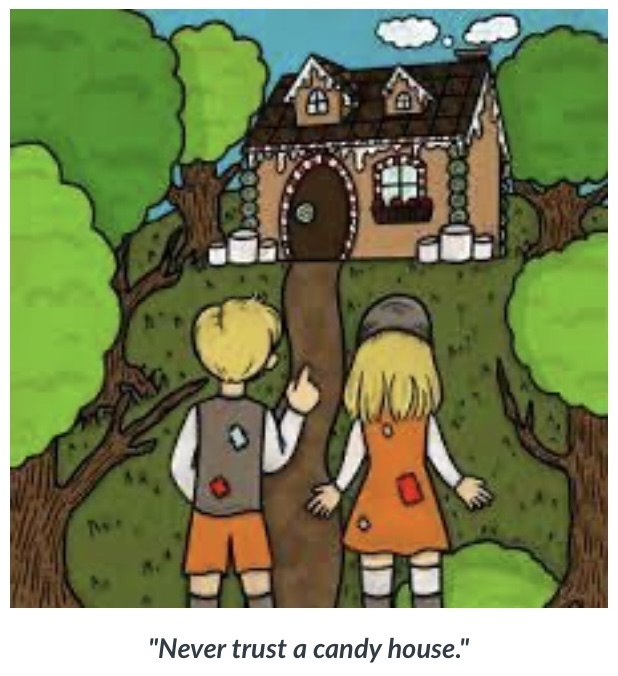

An internet meme with the caption 'Never trust a candy house.
Instructor: Bo Earle (he/him)
Time: Term 2, Mon Wed Fri 9:00 – 10:00 am
Why did you choose this image to represent the course?
Jennifer Egan’s novel The Candy House interprets artificial intelligence in terms of the ancient fairytale.
What are you most looking forward to about teaching in this course?
I look forward to questioning assumptions about AI and literature alike.
What can students expect from the course, in terms of workload and the types of readings?
Intensive reading of fiction and philosophy. There are two short formal essay assignments but most of your assigned writing will be relatively informal weekly online discussion posts.
ENGL_V 100 Reading and Writing about Language and Literatures: Bad Manners
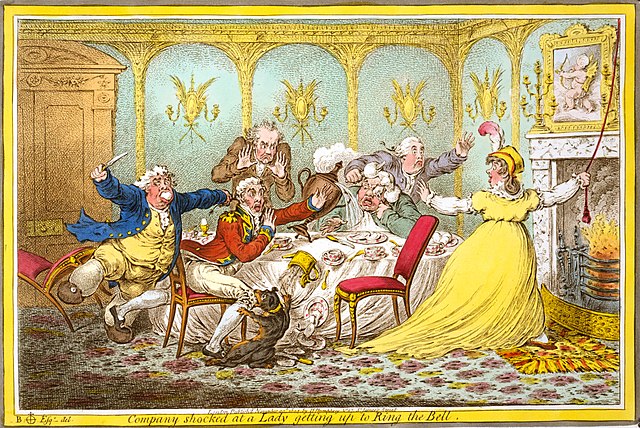

'Company shocked at a lady getting up to ring the bell.' James Gillray. Image via Wikipedia.
Instructor: Gregory Mackie (he/him)
Time: Term 2, Tue Thu 3:30 – 5:00 pm
Why did you choose this image to represent the course?
The image’s title says it all, really. I chose it because it’s funny – it is a caricature – and it illustrates the humour that often arises from competing (and incompatible) understandings of “correct” behaviour in social situations.
What are you most looking forward to about teaching in this course?
What are bad manners? The idea of manners, broadly construed, captures not only what we expect from others in society, but also what we expect from ourselves. This section of ENGL 100 takes up literary representations of civility and decorum – and their (often comic) violations. Why, for instance, do we behave the way we do in social situations? What are the rewards of being polite – and of avoiding being perceived as rude? Does politeness come ‘naturally’? We will pursue these and further questions in a term-long inquiry into the unarticulated assumptions and expectations that underlie everyday social rituals and performances.
What can students expect from the course, in terms of workload and the types of readings?
Our texts include eighteenth-century insult poems, Jane Austen’s Pride and Prejudice, Oscar Wilde’s The Importance of Being Earnest, Noël Coward’s Hay Fever, Kazuo Ishiguro’s The Remains of the Day, and short stories by Zadie Smith.
ENGL_V 490 All About Sherlock Holmes
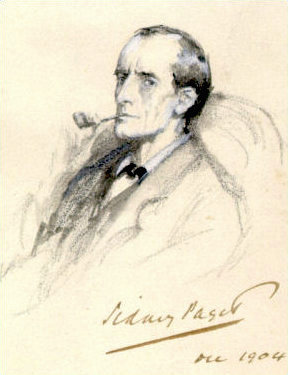

Sherlock Holmes in a 1904 illustration by Sidney Paget. Image via Wikipedia.
Instructor: Gregory Mackie (he/him)
Time: Term 2, Thu 12:00 – 2:00 pm
Why did you choose this image to represent the course?
This course is all about Sherlock Holmes, after all.
What are you most looking forward to about teaching in this course?
This section of ENGL 490 (English Majors seminar) will offer students the opportunity to explore the astonishingly resilient popularity of the greatest of all fictional detectives. Since his emergence into print in a British magazine in 1887, Sherlock Holmes has become a cultural icon around the world. In this course, we’ll be asking why, for whom, and to what end(s). The game is afoot!
What can students expect from the course, in terms of workload and the types of readings?
We’ll read original (“canon”) Holmes stories by Arthur Conan Doyle along with some non-original ones; we’ll also have a look at contemporary parodies and sleuthing competitors. Students will examine a multiplicity of Holmesian adaptations from the last hundred-plus years, and in the process we will embark on an investigation into the history of fandom and fan cultures.

